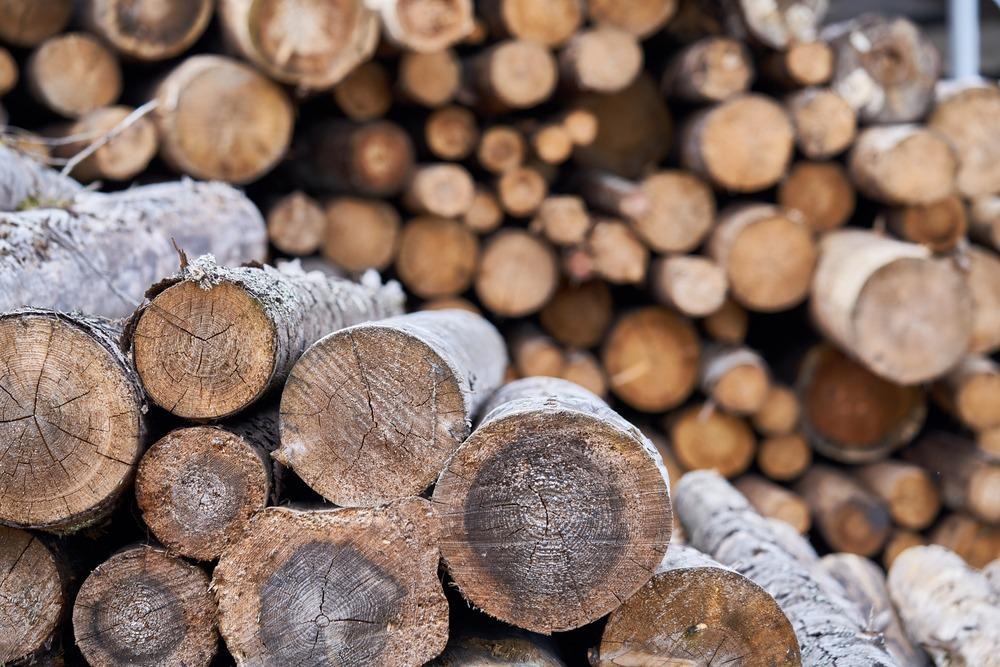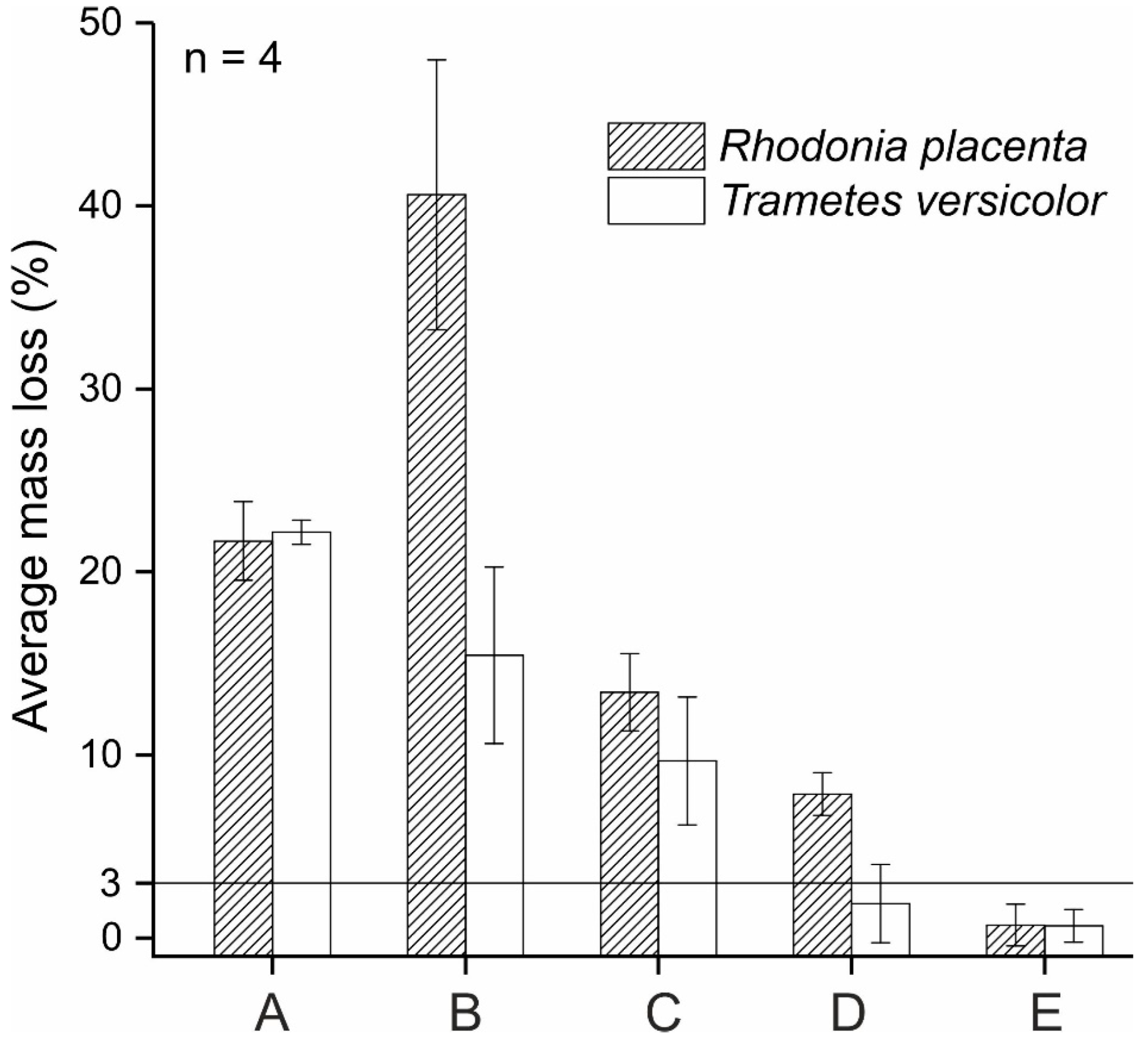Scientists have recently published a study in applied sciences, which focuses on the enhancement of the durability of wood, by inhibiting fungal infestations, using nano metal fluorides.

Study: Improved Durability of Wood Treated with Nano Metal Fluorides against Brown-Rot and White-Rot Fungi. Image Credit: OlegRi/Shutterstock.com
Use of Wood Lowers Carbon Footprint
Scientists have revealed that in comparison to concrete and steel used in construction, a product made of wood, such as wood-framed buildings, leaves the lowest carbon footprint and is environmentally sustainable.
Wood also serves as a carbon sink, i.e., if timber is used instead of steel for new buildings, around 20 gigatons of carbon could be stored. Additionally, the amount of energy required to construct a house using timber is significantly lower compared to concrete or steel.
These reports indicate that use of wood, as an alternative to concrete and steel, in construction could be included in climate change mitigation strategies.

Figure 1. MgF2 and CaF2 nanoparticles synthesized in a sol: (a) HAADF-STEM image and the corresponding EDX maps; (b) Fluorine—red; (c) Magnesium—green; (d) Calcium—blue. © Usmani, S.M. et al. (2022)
Enhancement of Wood Durability via Chemical Treatment
One of the key drawbacks of the use of wood in construction is its vulnerability to wood-degrading organisms. Hence, it is important to develop methods to protect wood from decay.
At present, several preservative formulations and techniques are commercially available that prevent wood degradation. One of the popular techniques is an increment of the hydrophobicity of wood.
A reduction of the moisture content of the wood makes them resistant to termites and wood-degrading organisms. Hydrophobicity of wood could be induced via chemical treatment, for example, a combination of polyethylene glycol (PEG) with silica sol impregnation.
Copper, followed by boron, has been extensively used in preservative formulations to protect wood from decay.
Fluorides have been popularly used in wood preservative formulations for their efficacy to inhibit basidiomycetes. However, fluorides, such as sodium fluoride (NaF) and sodium fluorosilicate (Na2SiF6), in water-based preservative formulations are not used because of their solubility, which makes them highly prone to leaching.
Also, fluorides if not fixed in wood with chromium compounds, are highly leachable. The banning of the use of chromium as biocides by the European Commission has further caused a decline in the use of fluoride-based preservatives.
Metal-based fluoride, like magnesium fluoride (MgF2) and calcium fluoride (CaF2), are less soluble in water and possess biocidal activity. However, owing to their large size, they cannot penetrate wood cavities.

Figure 2. Cell viability of Caco-2 cells (left) and HepG2 cells (right) in MTT assays. © Usmani, S.M. et al. (2022)
Nanoformulations and Enhancement of Wood Durability
Nanotechnology improves the distribution of chemical formulations in wood. Previous studies reported that nanoparticles of active ingredients, such as copper (Cu), boron (B), silver (Ag), titanium dioxide (TiO2), and zinc (Zn), can effectively inhibit wood-degrading fungi.
Some of the nanoparticle treatment causes mass loss of the treated plants. For instance, copper oxide (CuO) and zinc oxide (ZnO) dispersed in propylene glycol, caused mass losses greater than 10% in rubberwood plants.
Efficacy of the combinational treatment using TiO2 and ZnO nanoparticles was studied in common wood and mass losses below 1%, against T. versicolor, were observed.
To date, no nano-based treatment has been reported that protects wood against decay caused by Rhodonia placenta and T. versicolor.
Fluorolytic Sol-Gel Synthesis-A New Study
Scientists have recently evaluated low-water soluble metal fluorides MgF2 and CaF2 for protecting wood against decay. They performed an in-vitro agar test to assess the biocidal efficacy of nano-metal fluorides (NMFs) against wood-decaying fungi, namely, R. placenta and T. versicolor.
This experiment revealed that agar medium containing NMFs could efficiently inhibit the tested phytopathogens.
In this study, the NMFs were synthesized via fluorolytic sol-gel synthesis. These were administered to the sapwood of Scots pine and beech wood, which were, subsequently, subjected to accelerated aging by leaching.
Researchers studied 19F NMR and X-ray micro CT images and found the presence of nano-metal fluorides in wood treated with NMFs after they underwent leaching.
Decay resistance tests showed that mass losses were below 3%, against R. placenta and T. versicolor.
The authors revealed that even after leaching, significant biocidal efficacy was retained, by the combination of MgF2 and CaF2, against brown-rot and white-rot fungi.
Some of the reasons associated with the synergistic biocidal efficacy of the NMF combination include the optimal release of fluoride and the formation of the metastable phase of CaMgF4 that could maintain a substantial amount of fluoride aggregates within wood.
Additionally, this NMF combination enabled a reduction in the leaching of fluoride such that the remaining amount could still provide long-term protection against fungal decay.

Figure 3. Average mass loss caused by R. placenta and T. versicolor. A—Ethylene glycol, B—NaF (1 M), C—MgF2 (0.5 M), D—MgF2 (0.8 M), E—MgF2 + CaF2 (0.5 M). The horizontal line is the mass loss cut-off at 3% for durability classification. © Usmani, S.M. et al. (2022)
Conclusion
Some key advantages of using NMF in treating wood include handling safety and the fact that it provides durability without additional treatments.
In the future, the efficacy of the treatment against other pathogens, such as termites blue-stain and soft-rot fungi, could be tested.
Additionally, more tests are needed to determine the presence of NMFs in cell walls.
The current study emphasized the utilization of low-water soluble fluorides to protect wood above ground.
Reference
Usmani, S.M. et al. (2022). Improved Durability of Wood Treated with Nano Metal Fluorides against Brown-Rot and White-Rot Fungi. Applied Sciences. 12(3). pp.1727. https://www.mdpi.com/2076-3417/12/3/1727
Disclaimer: The views expressed here are those of the author expressed in their private capacity and do not necessarily represent the views of AZoM.com Limited T/A AZoNetwork the owner and operator of this website. This disclaimer forms part of the Terms and conditions of use of this website.